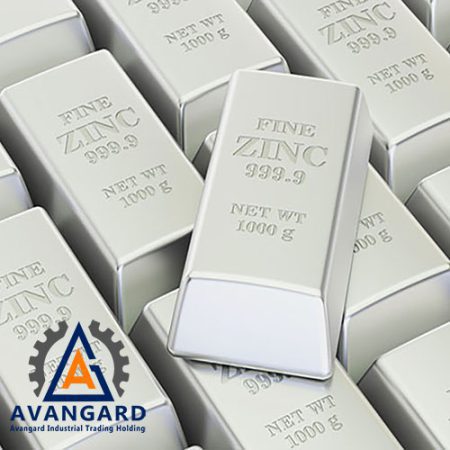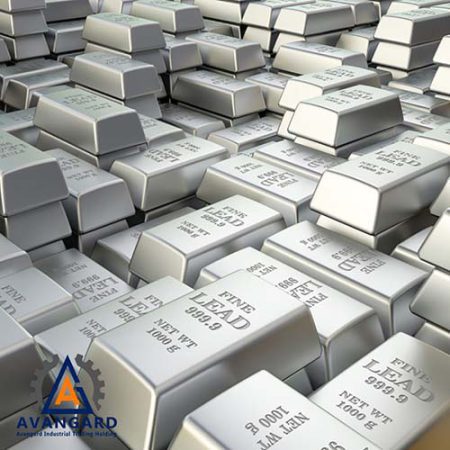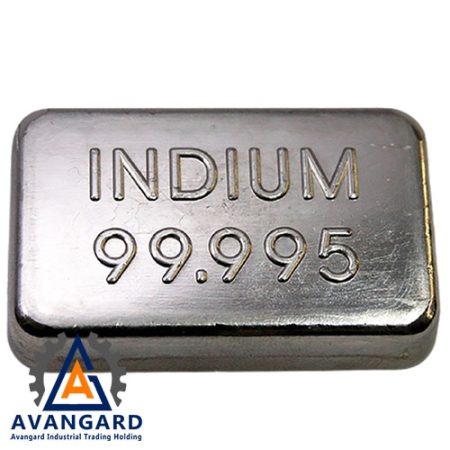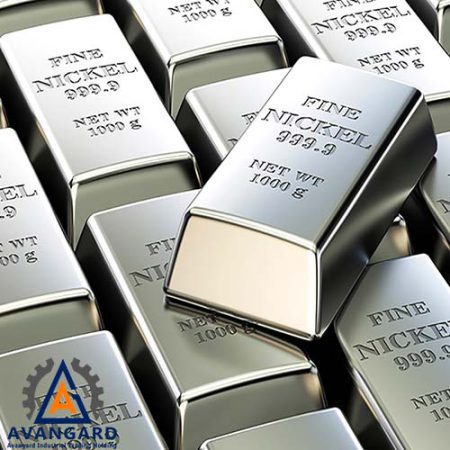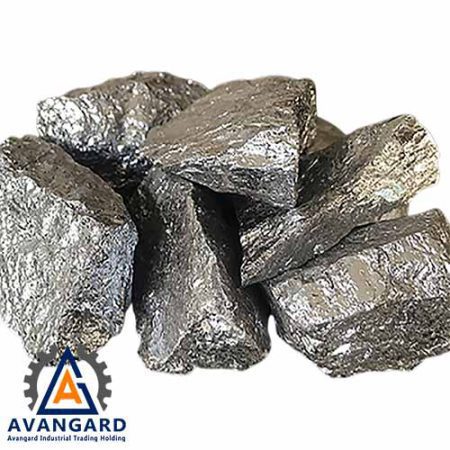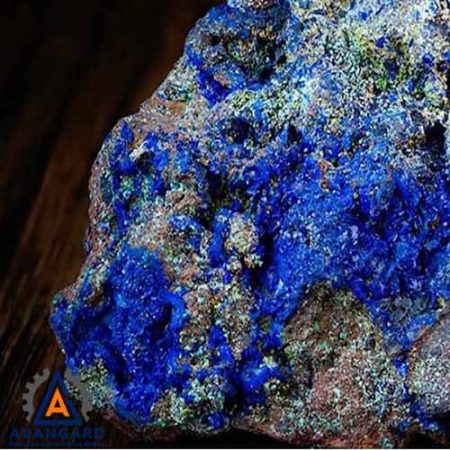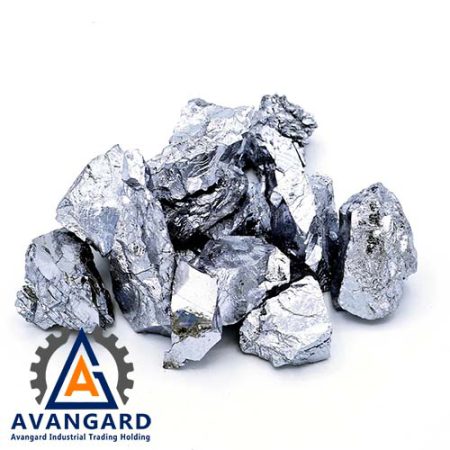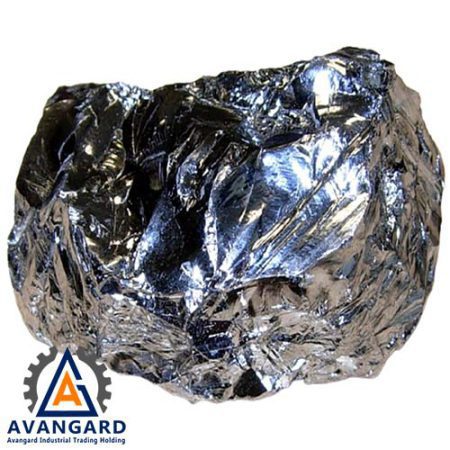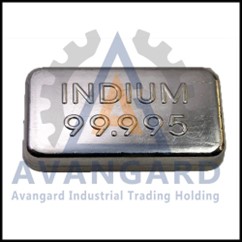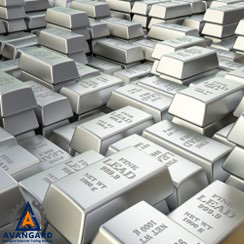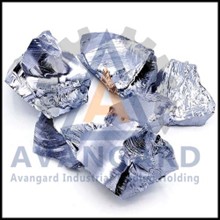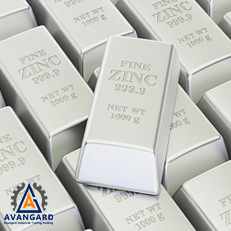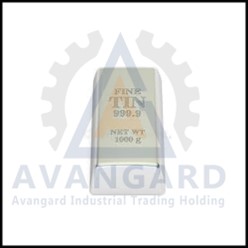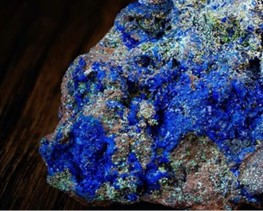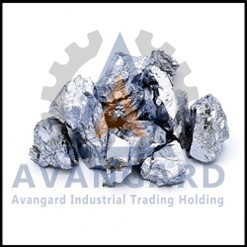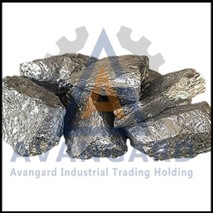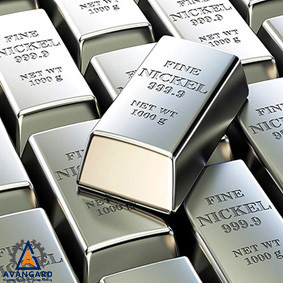Pure Metals
Pure metals, including indium, lead, silicon metal, zinc ingots, tin ingots, magnesium ingots, cobalt, chromium metal, calcium metal, and nickel, are essentially metals that are produced in a pure state without any alloys. These metals are used in various industries due to their specific physical and chemical properties, including in the casting industry as pure metal ferroalloys. Their common applications include use in electronics, construction, automotive, medical instruments, aerospace, and the production of alloy steel and cast iron, especially in the production of specific alloys in non-ferrous metals (ferrous and non-ferrous metals) in casting factories. For price inquiries, purchases, and orders of pure metal ferroalloys, contact the sales experts at Avangard Company.
Types of Pure Metals
Pure metals, known as indium, lead, silicon metal, zinc ingots, tin ingots, magnesium ingots, cobalt, chromium metal, calcium metal, and nickel, are fundamentally metals that are produced in their pure state without any alloys. These metals are used in various industries due to their unique physical and chemical properties. In the following text, we will briefly explain each of them along with some of the applications of pure metals.
1. Indium:
Indium is a chemical element that appears in the periodic table with the symbol "In" and atomic number 49. This metal is soft, shiny, and silver in color and is naturally found in the earth. Indium is used in some technology applications, especially in electronics. Due to its special physical and electronic properties, indium plays an important role in the production of LCD screens, solar cells, and semiconductor chips. It is also used in various compounds, such as some alloys and light-emitting compounds.
2. Lead:
Lead is a chemical element that is located in the periodic table with the symbol "Pb" and atomic number 82. Lead is a heavy, soft, shiny, and gray-blue metal. This element is naturally found in the earth and is found in the form of various sulfides and carbonates. This metal, with its high specific gravity, is used in batteries, plating, construction, etc. However, despite its many applications, it should be noted that lead is also dangerous due to its toxicity to humans and the environment, and its use requires strict adherence to environmental standards and regulations.
3. Silicon Metal:
Silicon Metal, with atomic number 14, which is identified by the abbreviation (Si), is one of the forms of the element silicon that is produced in metallic form. This material is obtained from silica rock (silicon dioxide) by various processes such as industrial processes. Silicon metal is originally created by refining mineral ores of silica rock. Among the uses of silicon due to its suitable physical and chemical properties are in the steel, aluminum, electronics, and glass manufacturing industries.
4. Zinc Ingots:
Zinc ingots, as a term, refer to metal blocks of zinc that have been compressed into an ingot shape. Zinc is a white and soft metal that appears in the periodic table with the symbol "Zn" and atomic number 30. This metal is found in nature as a rarity and is usually extracted from various minerals such as zinc sulfide. Zinc ingots are used due to their properties such as resistance to corrosion, the ability to perform various metalworking processes, as well as flexibility in various industrial applications, including the casting industry. Some of the uses of zinc ingots include: battery production, production of alloy metals, metal coating, production of chemical materials, etc. The use of zinc ingots in various industries is very common and plays an important role in the industry due to its properties and also its recyclability.
5. Tin Ingots:
Tin Ingots are considered one of the important products of many industries. This metal is identified with the atomic number 50 and with the abbreviation (Sn). Tin is a heavy and soft metal, with a bright and shiny color. Tin ingots are produced in the form of solid and uniform blocks. Tin ingots are used in electronics industries, in the production of ferrous and non-ferrous metal alloys in non-ferrous metal smelting, and in various other industries such as the manufacture of automobile parts, water pipes, building coatings, and industrial tools.
6. Magnesium Ingots:
Magnesium Ingots are one of the important products of magnesium ore, which is produced in the form of solid and uniform blocks. Magnesium is a light metal, gray-silver in color and is naturally found in the earth. This metal is identified with the atomic number 12 and the abbreviation (Mg). Magnesium ingots are used in various industries such as the automotive industry, the aerospace industry, the production of alloys in casting factories, the electronics industry, the sports industry, etc. due to their suitable and unique physical and chemical properties. However, it should be noted that the use of magnesium in some cases may be accompanied by technical challenges and special processes that require care and concern from technical and safety aspects. In this regard, the experts of Avangard Holding will answer your questions.
7. Cobalt:
Cobalt is a chemical element that is located in the periodic table with the symbol "Co" and atomic number 27. This metal is hard, shiny, and with a semi-gray and blue color. Cobalt is recognized as one of the main elements of the periodic table and is used in various types of chemical compounds and alloy metals. Cobalt is also used in alloying special metals, in the production of lithium-ion batteries, in the manufacture of paints, metal coating, medical matters, and more.
8. Chromium Metal:
Chromium Metal is one of the forms of the element chromium that is produced in metallic form. This metal is identified with the atomic number 24 and with the abbreviation (Cr), and under standard conditions, it has a relatively good resistance to corrosion and rust. Chromium metal is known as an important material due to its suitable physical and chemical properties in various industries such as automotive, electronics, and the production of various steel alloys, especially the production of steel with low carbon content and high chromium.
9. Calcium Metal:
Calcium Metal is one of the forms of the element calcium that is produced in metallic form. This metal is identified with the atomic number 20 and the abbreviation (Ca). This material is a silvery white color tending to yellow and is naturally found in carbonate layers and limestone rocks. Calcium metal is used in various industries such as iron refining, alloying in metals, steel refining, hydrogen production, metal production, chemicals, rubber, plastics, etc. due to its suitable physical and chemical properties.
10. Nickel:
Nickel is a chemical element with the symbol "Ni" and atomic number 28. This metal is silvery white, hard, and resistant with well-known anti-corrosion properties. Nickel is naturally found in various mineral ores and is one of the most used elements in industry.
Nickel is used in steel casting industries, electronics industries, coating, chemical industries, construction, paints, watchmaking, and so on. And in Avangard Company, it is sold in the form of pellets, ingots, and plates.
To inquire about the price and purchase and order of pure metals with analysis and valid certificates, contact the sales experts of Avangard Company.
Production Method of Pure Metals
The production of pure metals is often done from minerals using various processes. One of the main methods of producing pure metals is:
1. Mining: In this stage, the ore rock containing the desired metal is extracted. This process includes extracting mineral rocks from the ground, then crushing and grinding them.
2. Forging: For some metals, such as iron, the forging process is used. In this process, the ore rock is converted into iron.
3. Smelting: The next stage is smelting. In this stage, the ore rock or concentrate containing the desired metal is melted. This process may be done using melting furnaces, electric arc furnaces, or other processes.
4. Refining: After smelting, the metal is not pure and includes various impurities and pollutants. To produce pure metal, a refining process is carried out, which includes the use of various methods such as leaching, electrolysis, and chemical methods.
5. Purification: In the final stage, the pure metal is purified to reach high purity. This can include processes such as evaporation, distillation, and filtration.
These processes vary depending on the type of metal and the mineral used, but these are the main steps in producing pure metal ferroalloys or pure metals.
Price of Pure Metals
The price of pure metals varies greatly depending on the type of metal, purity, and other factors. Please contact the sales department at Avangard Company for a price list of pure metal ferroalloys.
| Row | Description | Price |
| 1 | Price of Indium | Contact Us |
| 2 | Price of Lead | Contact Us |
| 3 | Price of Silicon Metal | Contact Us |
| 4 | Price of Zinc ingot | Contact Us |
| 5 | Price of Tin Ingots | Contact Us |
| 6 | Price of Magnesium Ingots | Contact Us |
| 7 | Price of Cobalt | Contact Us |
| 8 | Price of Chromium Metal | Contact Us |
| 9 | Price of Calcium Metal | Contact Us |
| 10 | Price of Nickel | Contact Us |
Buying and Selling Pure Metals
Avangard Company is proud to announce that it now provides the possibility of buying and selling quality pure metals through its website. Relying on our experience and expertise, we are committed to supplying and providing metals with high standards and superior quality.
The advantages of buying pure metal through the website and sales unit of Avangard Company include:
- Easy and fast access to various and high-quality products
- Assurance of the authenticity and purity of products due to cooperation with reputable suppliers
- Competitive and fair prices
- Continuous support and professional after-sales services
To view casting raw materials or to buy and sell specific metals in various types and high absorption rates, please visit the pure metals sales section on the Avangard website. Also, if you have any questions or need more information, please contact the Avangard support team.

